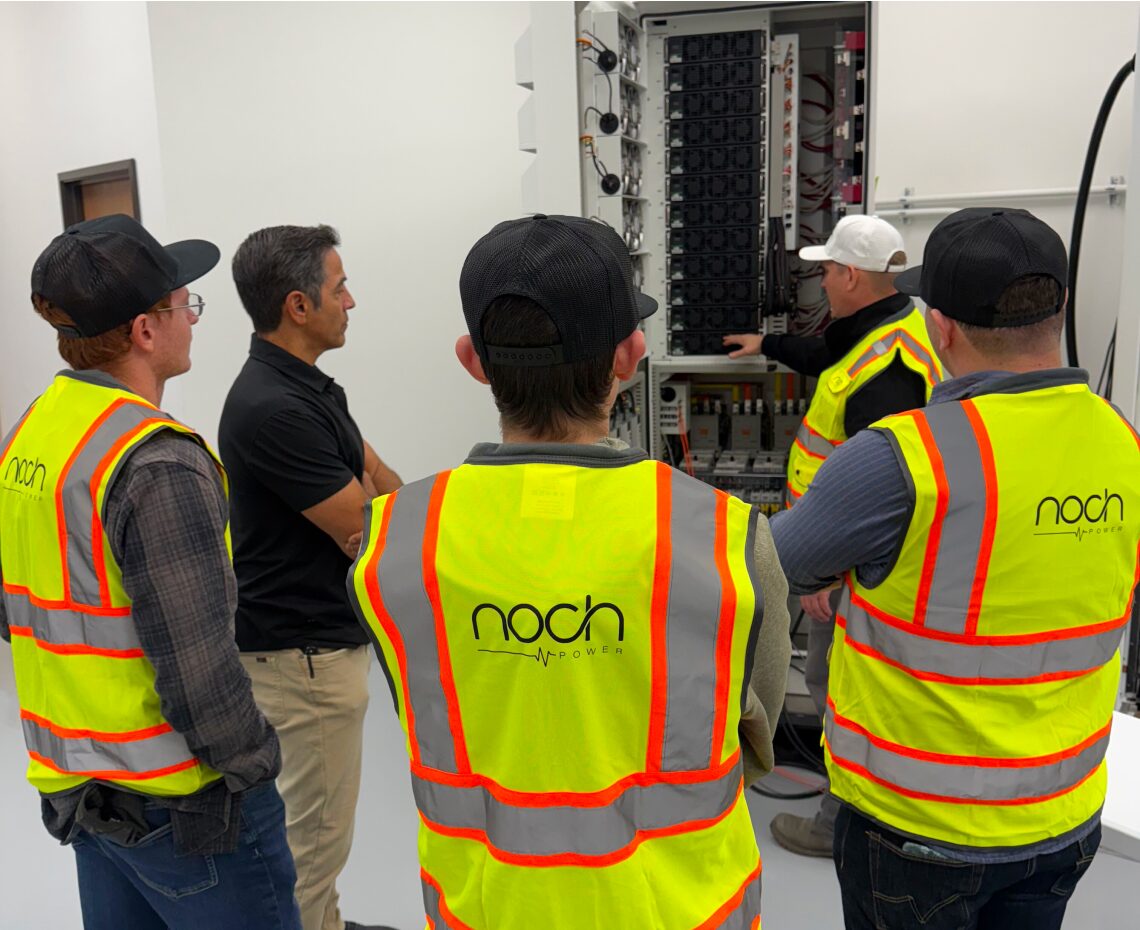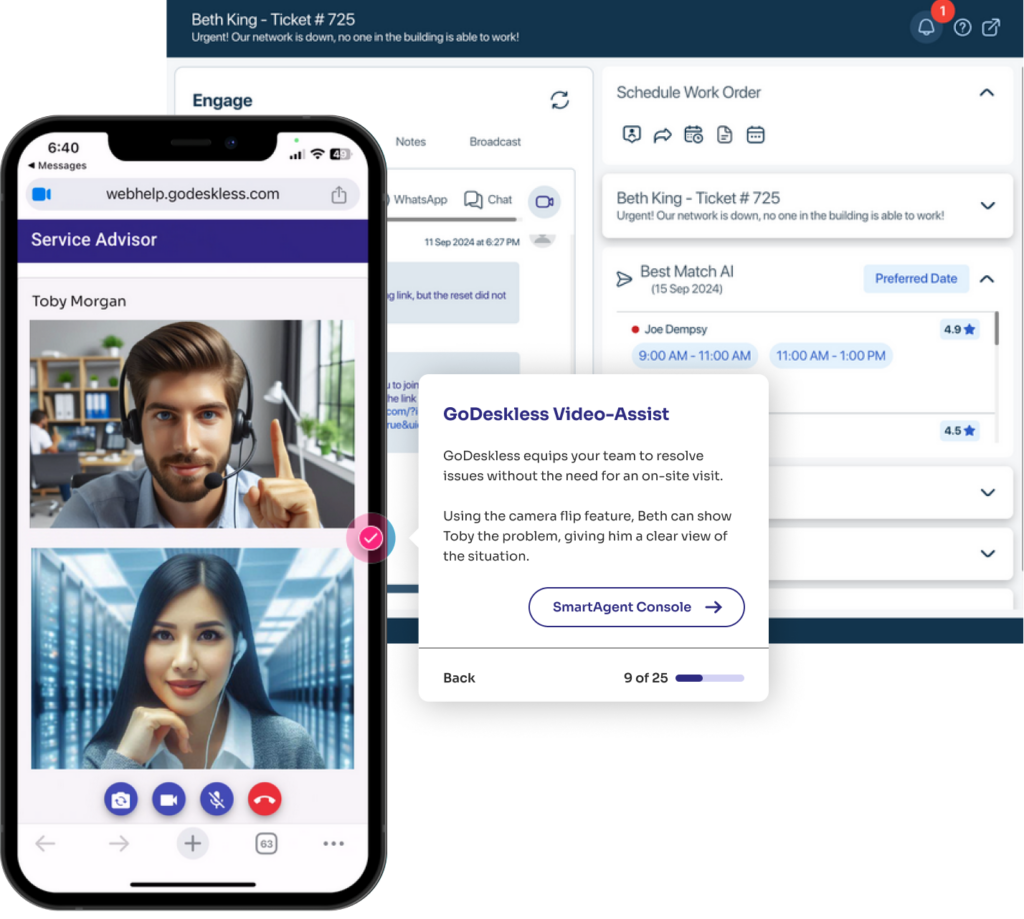Customer service isn’t what it used to be—it’s faster, smarter, and more human-focused than ever. In the wake of mass AI adoption, customer service and support leaders’ priorities have undergone a rapid transformation. In 2025, staying competitive means keeping up with customer service trends to meet modern customer needs. We’ve laid out key trends that are shaping the future of customer service, along with practical strategies to help you stay ahead.
Personalized Customer Service: A Non-Negotiable
Personalized customer service is now a baseline expectation that could make or break your first touchpoint with a customer. Research by McKinsey reveals that 71% of consumers expect companies to deliver personalized customer service, and 76% get frustrated when this doesn’t happen. This demand is particularly critical in service industries like utilities and field services, where tailored solutions can significantly impact customer satisfaction and loyalty.
Customers increasingly prefer real-time updates on service status, as highlighted by a Salesforce study showing that 84% of customers value being treated like a person, not a number. Businesses should invest in customer service tools that provide real-time updates and enable instant communication between customers and service teams.
For industries like field service, this means using data-driven tools to ensure that every service interaction feels unique and relevant. For example, field service technicians can use AI-powered mobile apps to access detailed customer histories, predict maintenance needs, and offer proactive solutions during visits. This approach not only improves customer satisfaction but also builds trust by demonstrating a deep understanding of their needs.
Customers Actively Seek Self-service Tools
The modern customer is increasingly self-reliant, with 68% preferring to resolve issues independently before reaching out to customer service according to Salesforce. This shift in customer behavior has significant implications for field service management, particularly for industries with deskless workers. By integrating self-service tools into field service platforms, companies can meet customer expectations while streamlining operations. Self-service tools create a win-win situation for both customers and field service teams!
Customers value speed, convenience, and control over their interactions with businesses. Self-service tools, such as online knowledge bases, troubleshooting guides, and interactive FAQs, empower customers to find quick solutions to minor issues without waiting for a technician or customer service agent. This proactive approach not only saves time for customers but also reduces the pressure on deskless workers, allowing them to focus on more urgent and high-value tasks.
Omnichannel Customer Support All Around
Omnichannel customer support is no longer optional, it’s standard procedure. Customers want seamless interactions across multiple channels, whether it’s chat, email, social media, or phone. A report by Zendesk highlights that 73% of customers will switch brands after multiple poor experiences, especially when transitioning between channels.
Providing consistent experiences across touchpoints is crucial—such as enabling customers to switch from a chatbot to a human agent without having to repeat information—ensures a smooth journey. To achieve this, businesses should leverage unified communication platforms that centralize customer interactions, making it easier to provide seamless and efficient support.
Automation and AI in Customer Service
Artificial Intelligence (AI) and automation in customer service have become indispensable strategies, with nearly everyone experiencing their benefits as a customer. According to a Gartner report, 60% of service interactions will be handled through automation or AI technologies by 2025. These innovations enable businesses to deliver proactive service by using AI-driven predictive analytics to anticipate customer needs and resolve issues before they even occur.
This approach is particularly impactful in industries like field service, where proactive maintenance can minimize costly downtime. Additionally, self-service tools like AI-powered chatbots and knowledge bases empower customers to solve problems independently. Company leaders claim this has increased customer support satisfaction by 24%, according to Intercom. To stay ahead, businesses should incorporate AI in customer service strategies to help automate repetitive tasks and leverage predictive insights for improved service delivery.
Beyond the competitive advantage aspect—customers actually expect you to be on top of the AI game. Zendesk reports that the majority of consumers (a whopping 81%) believe AI is now a core component of modern customer service, and 70% see a clear gap between companies that leverage AI effectively and those that don’t. This underscores the growing divide between organizations that embrace innovation and those that risk being left behind.
The enthusiasm for new tech is evident, with 43% of customers excited about the potential of generative AI to improve their service experience as per the Boston Consulting Group. By integrating field service optimization tools with customer databases, companies can provide a complete view of interactions, personalizing services at every touchpoint. This combination of personalization, efficiency, and proactive service is quickly becoming the gold standard in customer care.
Customer Retention: A Cost-Effective Strategy
As we look toward 2025, customer service trends show a growing emphasis on retention as businesses recognize its connection to lower costs and higher customer loyalty. Investing in customer service isn’t just about keeping customers happy in the short term—it’s also a powerful strategy for long-term retention. Studies consistently show that customer retention is significantly more cost-effective than customer acquisition. According to Semrush, companies that fail to allocate even a small percentage of their budget to customer service face higher customer acquisition costs (CAC).
Why does this matter? Poor customer service leads to higher churn rates, which means businesses have to spend more to replace lost customers. On the other hand, prioritizing exceptional customer service reduces churn, creating a loyal customer base that requires less investment to maintain. This not only improves profitability but also strengthens brand reputation.
For industries like field service, where retaining customers through reliable and personalized service is key, tools like real-time communication platforms and predictive analytics can make a tangible difference. By resolving issues proactively and exceeding expectations, companies can foster trust, increase retention, and drive down their overall CAC.
By linking customer service to retention, businesses can achieve a win-win: happier customers and healthier profit margins.
Stay on Top of Customer Service Trends in 2025
As customer service trends continue to evolve, it’s up to business leaders to meet modern expectations but set the bar for the future of service delivery. The trends shaping 2025 are clear: customers demand seamless, personalized, and proactive service.
GoDeskless is uniquely positioned to help businesses meet these demands. Our mobile-first field service optimization platform empowers deskless workers with tools like real-time communication, AI-driven scheduling, and seamless customer engagement solutions. With GoDeskless, you can improve operational efficiency, reduce costs, and elevate the customer experience to new heights.
Ready to transform your service operations? Learn more about GoDeskless and discover how we can help your team exceed customer expectations in 2025 and beyond.





